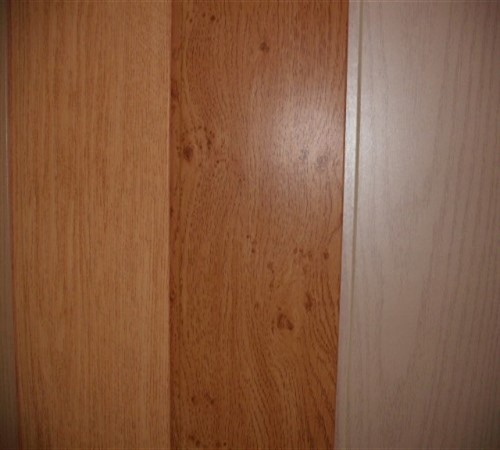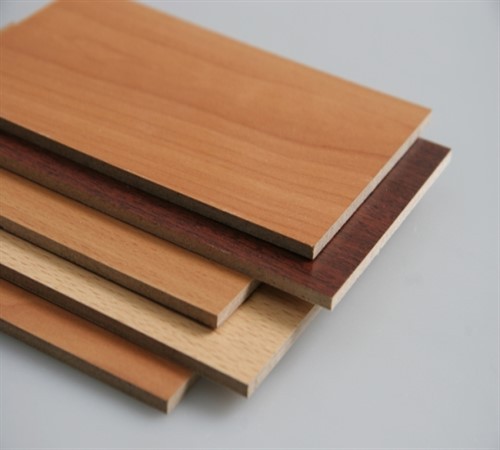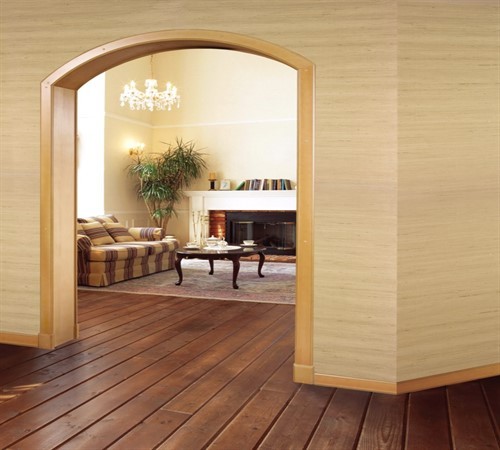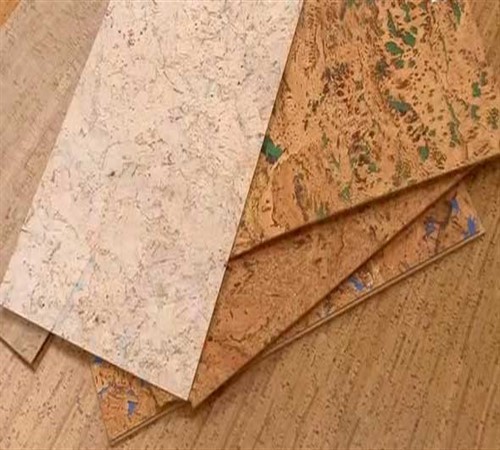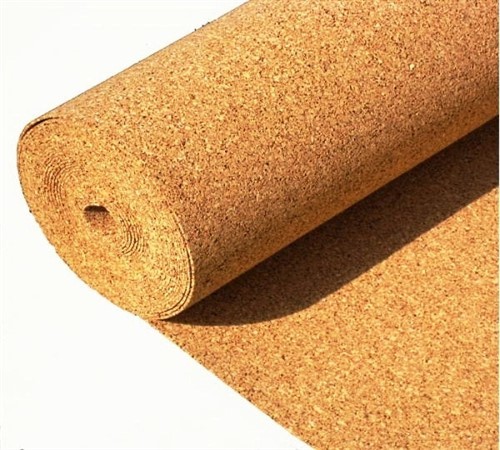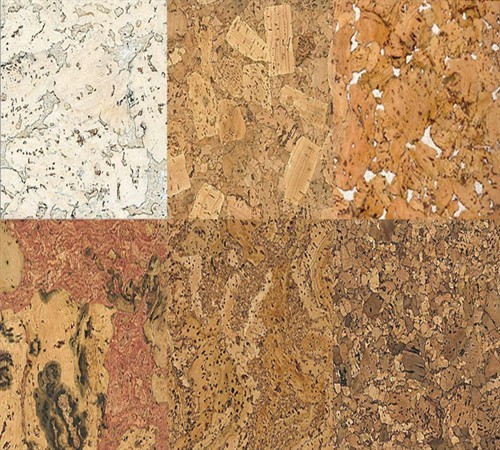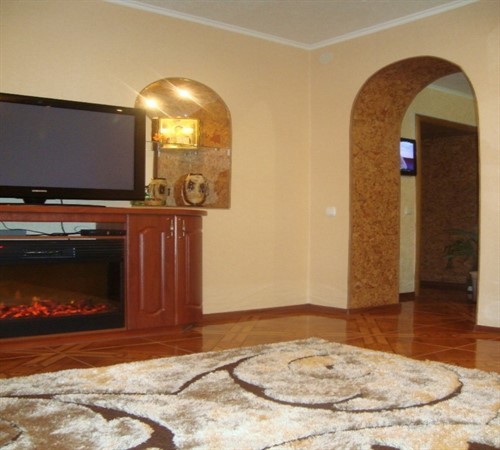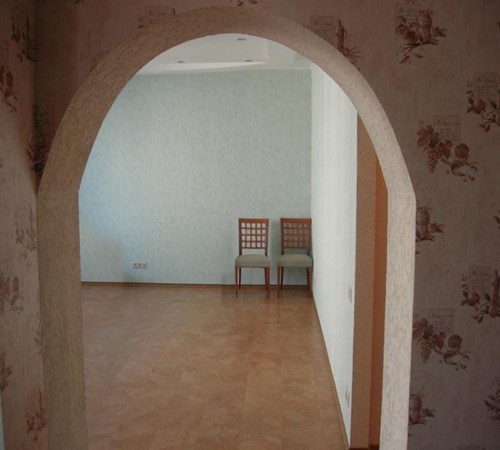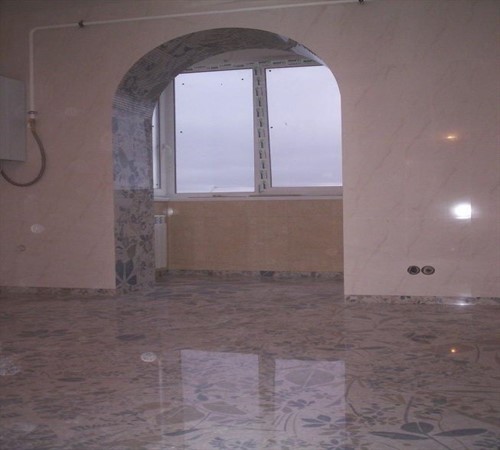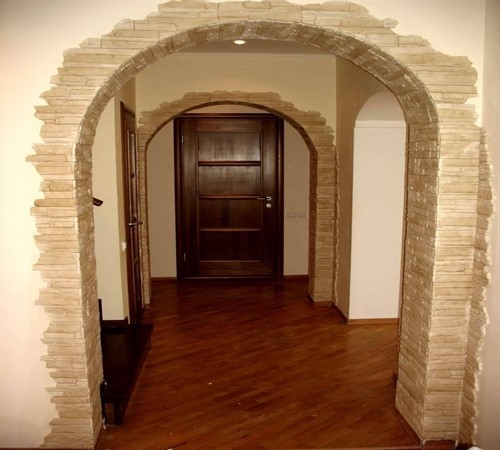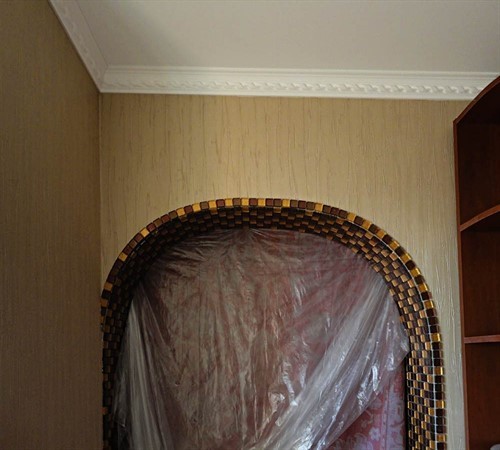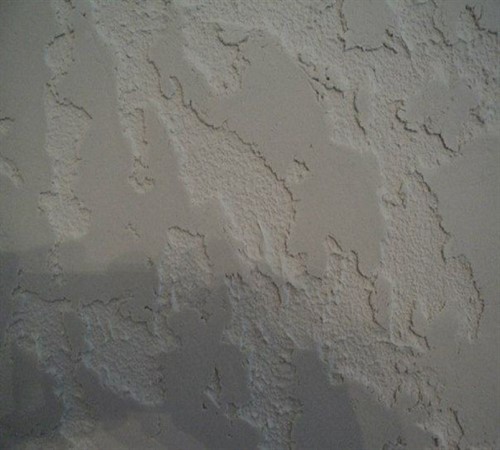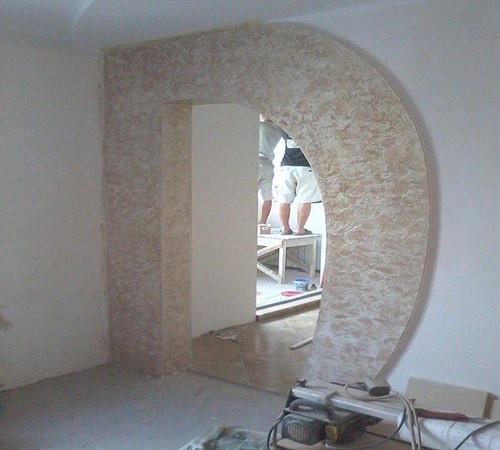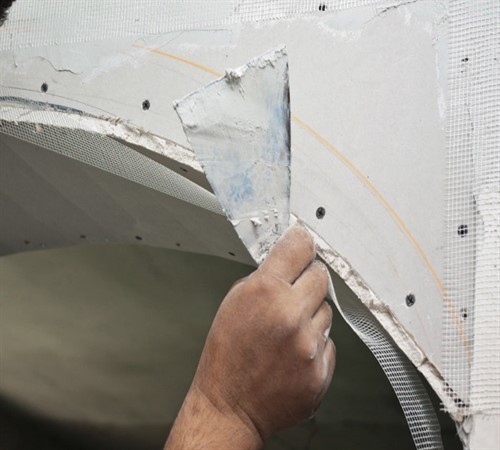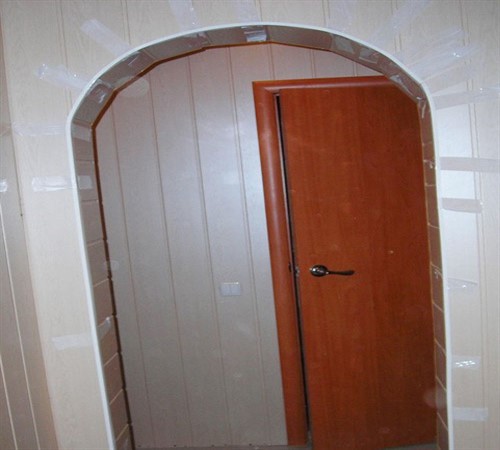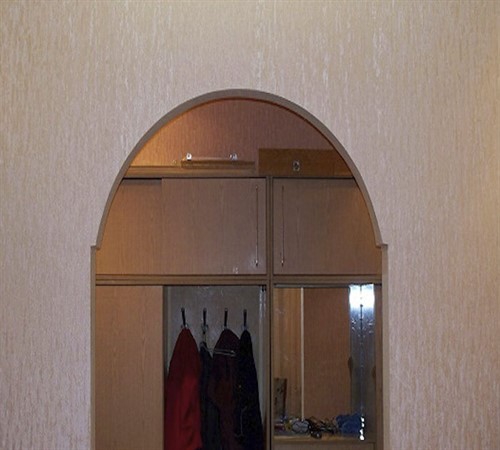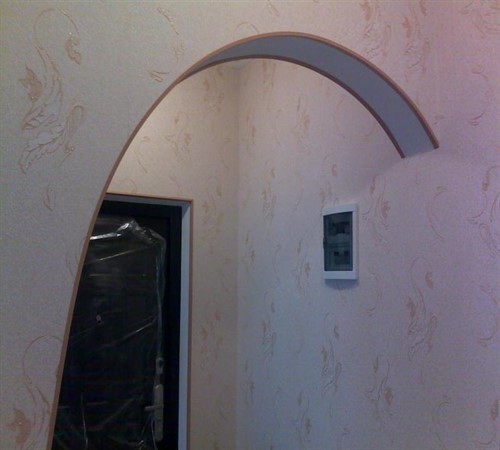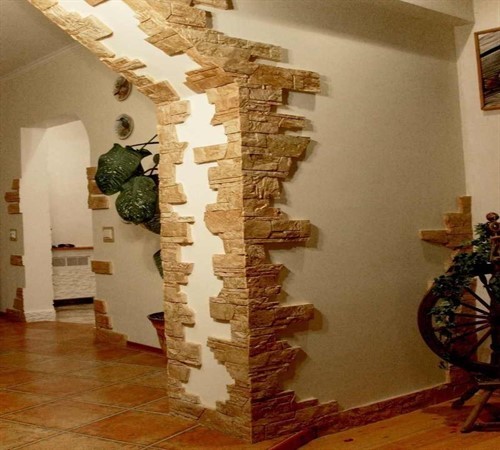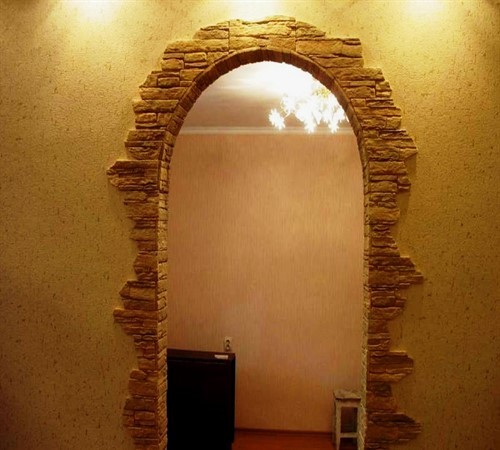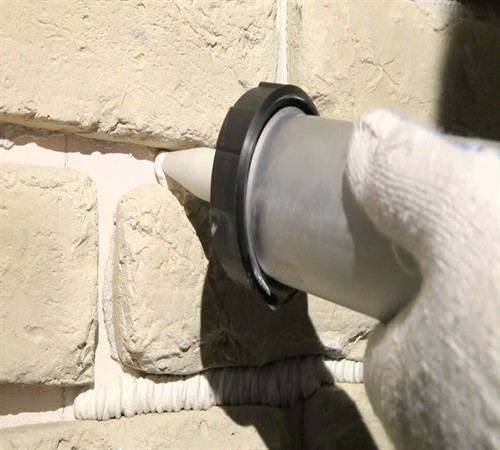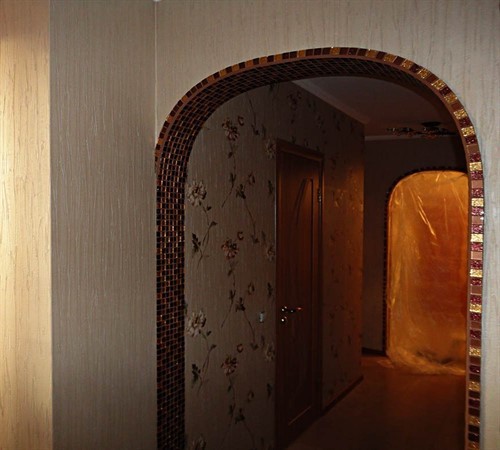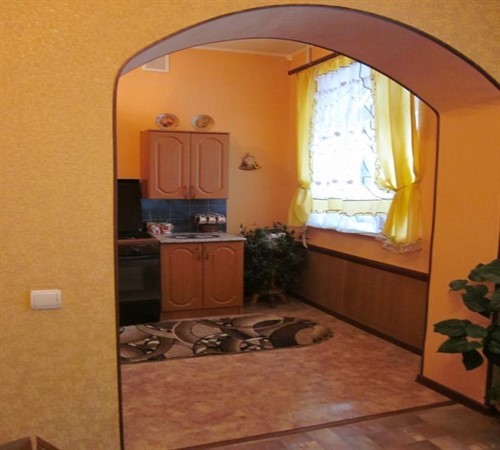The design of the wall niche, window or interior opening allows you to transform any interior. However, the arch of the arch acquires the decorative value of only with properly selected finishing material and competent installation work.
Content
Choosing material for finishing
For decorative decoration of arches, a huge variety of materials is used, each of which has a number of advantages and disadvantages.
Natural wood
The arches trimmed with natural wood give the room a certain share of solidity, style and nobility, harmoniously combining with any interior design, whether it be classic, high-tech or modern.
The undoubted advantages of wood structures are:
- environmental friendliness;
- the uniqueness of the pattern formed by annual rings;
- high strength indicators inherent in varieties of solid wood, including red wood, oak, nut, ash;
- preservation of a presentable look for many years.
However, the structure of the wood array has a number of disadvantages:
- low moisture resistance indicators;
- a tendency to deformations in conditions of high humidity, sharp temperature changes and other similar factors;
- the large weight of individual structural elements makes it difficult to carry out installation on their own;
- high cost.
As a rule, the decoration of arches from valuable breeds is carried out by manufacturing the finished design to order with the subsequent installation by specialists of the company.
MDF panels
Almost equal alternative to the natural tree are MDF panels, the manufacture of which is based on compression of wood chips. Depending on the upper coating, MDF panels are distinguished:
- laminated. The resulting plates are covered with a polyvinyl chloride film that simulates the texture of wood and increasing the strength of the product;
- openced. Ready slabs are compressed with a thin layer of wood, after which the front side of the product is covered with protective varnish.
Openced panels differ from laminated materials with a higher cost and better operational characteristics.
Advantages of MDF panels relative to natural wood structures:
- environmental friendliness due to the absence of harmful substances and compounds in the product;
- resistance to temperature changes, moisture;
- ease of installation due to the small weight of the panels;
- low cost.
Despite a lot of positive aspects, MDF panels are inferior to arches decorated with a real tree:
- ease of damage through a point blow;
- under the influence of sunlight, they gradually lose their original shade;
- a small operational period rarely exceeding 5-7 years.
Decorating the interior arches of MDF panels with a small cross -country ability by several years increases the service life, while maintaining the original type of structure.
Traffic jam
Interior arches look original, the decoration of which is made using cork material presented:
- Panels. The basis of the products is a pressed cork, on top of which a thin veneer is placed, saturated with wax. The minimum thickness of the cork panels is 3 mm.
- Roll products, the structure of which is similar to cork panels, with the only difference that not all series of goods are subjected to wax impregnation. In this case, the roll material can have a variety of color assortment by staining the facial and/or wrong layer.
- Walls consisting of a paper base and a thin sheet of veneer, glued on the base. Quite often, cork wallpapers have a self -adhesive layer, significantly simplifying installation work.
Pros:
- resistance to spot strikes;
- prevent dust accumulation;
- do not lose the initial shade for a long period;
- have antibacterial characteristics, preventing mold;
- the service life is 10-20 years.
Cons:
- unprocessed by wax coatings are quickly deformed in conditions of high humidity;
- the ability to absorb odors;
- high price.
When choosing a cork material, it is worth giving preference to a coating processed by wax.
Wallpaper for the arch
The decoration of arches with wallpaper refers to the most popular and, at the same time, budget option due to a number of predominant features relative to other finishing materials, including:
- a variety of colors, textures, ornaments;
- simplicity of gluing;
- the possibility of wet cleaning using non -aggressive detergents;
- available cost.
Flaws:
- the ease of damage both in the process of gluing and during operation;
- fading over a short period of time;
- fragility.
When choosing paintings, it is worth giving preference to plazelin, vinyl, bamboo or glass wallpaper plane. It is possible to have a small or abstract pattern that does not require combination with an ornament on the wallpaper, which glued the walls adjacent to the arch.
Tile for the arch
Arking tiles are a less common, but to this day, the method is in demand.
Pros:
- wide range of color performance;
- high resistance to moisture;
- preservation of initial characteristics for many years;
- ease of care;
- duration of operation.
Cons:
- considerable weight of the tiles requires a strong arched structure;
- the complexity of work, requiring certain skills or attracting specialists;
- high cost.
The optimal choice is narrow tiles of small size, allowing minimizing waste during facing work.
Decorative stone
In recent years, the arches have gained particular popularity in recent years with a decorative stone, perfectly combined with other building materials. Artificial stone is made of expanded clay, pumhes, cement with the addition of mineral pigments, the combination of which allows you to achieve a full imitation of any natural stones.
Advantages:
- wide selection of shades, textures;
- high resistance to damage;
- moisture resistance;
- simplicity of leaving during operation;
- durability.
Flaws:
- large weight;
- complexity of installation;
- high cost.
Along with tiles, lining the arch is preferable to small stone with a stone, which will greatly facilitate the installation in the vaulted part of the structure.
Mosaic for the arch
The decoration of the arch with mosaics is a rather painstaking process, which, upon completion of the work, pours into a bewitching sight.
The advantages of mosaics:
- a variety of sizes, shapes and color design;
- moisture resistance;
- high strength;
- wear resistance;
- durability.
Flaws:
- duration and complexity of work;
- high cost.
Currently, metal, ceramic, glass and other types of mosaics are produced, so it will not be so difficult to choose an option corresponding to the style solution of the interior.
Decorative plaster
Almost the only material that allows you to create a unique masterpiece, showing a little imagination and creative abilities. Decorative plaster is realized in the form of a dry and finished mixture. In this case, the dry mixture is diluted with ordinary water in the proportion indicated on the instructions attached to the composition.
Pros:
- the ability to create an arbitrarily expressive or smoothed relief;
- simplicity of application;
- the possibility of multiple staining with special paints;
- there is no need to carefully level the surface before applying the plaster;
- low cost.
Cons:
- ease of mechanical damage;
- the impossibility of wet cleaning;
- repair of the damaged area will remain noticeable;
- relatively small operational period.
The decoration of arches in the apartment with decorative plaster is a universal method that requires a small amount of time and a minimum of skills.
Regardless of the selected material, before the start of finishing work, it is necessary to carefully prepare the working surface in order not to spoil the final result of the decor that has been dumped along with plaster or protruding unevenness.
Surface preparation for decoration
The reliability of fixing the finishing material largely depends on the integrity of the preparation of the working surface, during which it is necessary:
- remove the protruding areas, as well as poorly holding putty, paint, paint;
- doing seams, if the arch is made of sheets of drywall, cover with a sickle;
- primed the surface;
- align the working base using putty;
- propket.
After completely drying the primer, you can proceed to the installation work.
Arch
The process of finishing the arched opening with panels, wallpaper, stone and other materials is slightly different.
Finishing with panels
The decoration of the arch in the apartment by means of MDF panels, plastic, plugs is possible in the absence of highly rounded structural elements. Installation of the selected materials is carried out on glue or with the device of the crate.
Mounting on glue is carried out as follows:
- careful preparation of the surface;
- the excess parts of the panels are marked and cut off before using the adhesive composition;
- on the wrong side of the panel, a zigzag strip is applied with liquid nails or glue specially selected for the material used;
- apply the panels to the surface and align in level;
- after 5-10 minutes, after the glue is polymerized, taped on the surface of the panel with a rubber hammer, controlling horizontal.
Installation on the crate does not require leveling the surface and looks like this:
- in the opening of the arch, a crate of wooden bars or metal guides is built, which is fixed to the surface with dowels;
- at the top and lower, the crate is screwed with screws with screws for mounting the panels;
- the panels cut in size are installed in the starting guides and fixed with screws to the crate.
At the end of the finish, the ends of the arch must be ennobled by gluing special corners from the same finishing material.
Decoration with wallpaper
The technology of pasting with wallpaper depends on the type of wallpaper.
For thin wallpapers without the use of plastic corners:
- the wallpaper strip is glued to the wall adjacent to the arch so that the edges of the canvas protrude beyond the boundaries of the arch by 2-3 cm;
- on the protruding allowance every 2 cm, zigzag -shaped incisions are made and the resulting tongues of the canvas are bent on the inner surface of the arch, carefully rolling the roller;
- similarly, the walls are pasted on the other side of the arch;
- cut the strip of wallpaper, the dimensions of which correspond to the width and length of the inner arch of the arch;
- playing the inner surface of the arch is made from the bottom up, well rolling a roller to get rid of air bubbles.
If the length of one strip of wallpaper is not enough, then the joint of the two stripes is located in the center of the arch. If it is necessary to use 3 stripes of wallpaper, the joints are determined at the level of connection of the arch of the arch with vertical planes.
When using textile or vinyl wallpapers using frame:
- the glued wallpaper on the walls adjacent to the arch is cut along the boundaries of the arch;
- cut the wallpaper strip according to the size of the inner surface of the arch and glued;
- if necessary, excess is cut by a clerical knife;
- after 2-3 days, when the glue dries, fix the selected type of corner according to the protruding elements of the arch.
Camping wallpaper is glued similarly to non -woven, with the only difference being that the finished acrylic or contact glue is used, which is applied to rolled wallpaper and on the pasted surface.
Decorative stone or tile
As a rule, a stone cladding is carried out not only in relation to the arched opening, but also a part of the walls adjacent to the opening by symmetric or asymmetric placement.
The order of preparatory measures:
- on a pre -spaced and primed surface, notes are made to improve adhesion of the material with the surface;
- stones intended for installation are laid out on the floor and select the most advantageous combination of relief, drawing, overflow;
- using a metal brush, the wrong side of the material is cleaned of foamy bumps.
The finish of the opening is made using a cement mortar, or liquid nails from the bottom up. At the same time, the walls adjacent to the arch are initially faced:
- the glue is applied to the wall and to the stone, not exceeding the layer of 1 cm, otherwise the tile will slide down;
- the first stone is laid at the junction of the arched opening and walls;
- a second stone is laid on top of the first, shifting it towards the opening to the thickness of the stone;
- the alternation of the masonry is repeated to the intended level, which avoids sloppy corners and the use of framing elements in the form of corners, skirting boards and other elements;
- the finish inside the arched opening is also overlapped.
For finishing the upper part of the arch:
- dry tile/stone is applied to the alleged place of gluing; With a pencil, an excess line is marked, along which they are carried out several times by a construction knife;
- the unnecessary part is broken down by means of pliers;
- burnts and irregularities are removed with a file and sandpaper.
After 1-2 days, at the end of facing work, the seams are embedded:
- the construction syringe is filled with a grouting solution;
- to obtain a pronounced relief, the seams are filled, not reaching the upper edge of the stone by 3-4 mm;
- to obtain a smoothed relief, the seam is filled at the same level with the upper boundary of the stone;
- after 30-40 minutes, filled seams are smoothed with a special scapula or spatula, getting rid of irregularities.
Tiles cladding are made similarly to a decorative stone.
Mosaic finish
It is easier and faster to lick the arch with a mosaic collected in small matrices. Fixation of individual modules in the matrix is \u200b\u200bcarried out using a paper on which the mosaic is laid down the face down, and a small mesh, which serves as the basis for gluing the modules of the wrong side down. Since the mosaic is made of various materials, a transparent adhesive is used to install transparent modules, and white for opaque modules.
The process of decoration of the arch with mosaics is as follows:
- Applying the matrix, mark the area of \u200b\u200bthe working surface on separate segments according to matrix sizes.
- A gear spatula is applied to the wall glue to place a single matrix.
- The set of modules in the adhesive composition is carefully sneaked, avoiding the ingress of glue on the facial surface of the mosaic and adjusting the horizontal placement of the matrix by the construction level.
- Similarly, they repeat the styling of all the necessary elements.
- After grasping the glue solution, the protective layer of the mosaic is removed.
- The grout of the seams is carried out in the vertical and horizontal direction using a rubber spatula.
- An hour after applying the grout, the excess solution is removed, making the movements of the spatula in diagonal directions.
At the end of the work, the mosaic must be wiped with a damp sponge to remove traces of grout, without making any special efforts in order to avoid leaching it from the seams.
In the process of decorating the arch with your own hands, it is necessary to control the horizontality of all the matrix modules, so it is better to entrust a person who is uncertain in his abilities.
Decoration with decorative plaster
With the use of decorative plaster, the decoration of the arch, the photo of which is presented below, is carried out in a fairly short time as follows:
- A small layer of plaster is applied to a pre -prepared surface.
- Through grater, sponges and other improvised means form a pattern and relief of the future surface.
- With an insufficiently pronounced relief, the plaster is added in the right places only after the first layer dries. To give a decorative effect, several layers of plaster are often required.
At the end of work and thoroughly drying the surface (1-2 days), an arch is painted, varnish or other protective coating.
More clearly you can see the decoration of the arch video:
Application of corners
No matter how strength the material is chosen for the decoration of the arch and the walls adjacent to it, but the protruding parts of the structure after a fairly small period begin to go to breath, dull, tear off, because the arches are undergoing a large load. The use of skirting boards and corners from MDF, plastic, wood and other materials that allow not only to protect the finishing material, but also hide the cracks, chips, and irregularities formed in the process of installing cracks.
Installation of corners is carried out by glue or liquid nails, which are applied to the inside of the material at the end of the finish. At the same time, the decoration of the arch with a corner begins with the sidewalls and ends with the vaulted part.
Additional elements in the form of corners, skirting boards should be selected several tones darker or lighter than the main finish in order to more clearly emphasize the shape of the arch.
Decorative decoration of arches takes a lot of time and requires special accuracy. Compliance with all stages of decoration with one or another material and leisurely during installation work will result in the end of the finish of the arch into the wonderful element of the interior, which will long please the owners of the house and their guests.


